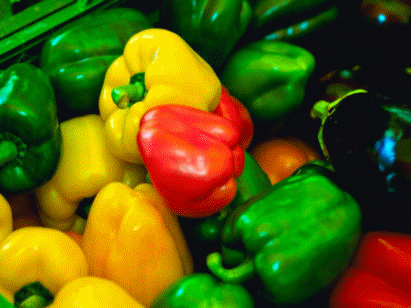 Fight diseases with phytochemicals.
One of the big components in these fruits and veggies are phytochemicals ("fight–o–chemicals"). The American Cancer Society recommends five to nine servings of a variety of fruits and vegetables per day for protection against cancer and for a plethora of other health benefits.
Fight diseases with phytochemicals.
One of the big components in these fruits and veggies are phytochemicals ("fight–o–chemicals"). The American Cancer Society recommends five to nine servings of a variety of fruits and vegetables per day for protection against cancer and for a plethora of other health benefits. Phytochemicals, chemical compounds that occur naturally in plants. Some are responsible for color and other organoleptic properties, such as the deep purple of blueberries and the smell of garlic.
These nutrients are typically found in edible plants, especially colorful fruits and vegetables, but also other organisms including seafood, algae and fungi. The principal class of phytochemicals is polyphenol antioxidants, chemicals, which are known to provide certain health benefits to the cardiovascular system and immune system.
The most rigorously tested phytochemical is a yellow–pigmented carotenoid present in many yellow and orange fruits and vegetables. Zeaxanthin and another carotenoid called lutein were found to be useful in the prevention and treatment of age–related macular degeneration (AMD). Both compounds have been observed to collect in the retina when ingested orally, and they serve to protect the rods and cones against the destructive effects of light. Beta–cryptoxanthin appears to protect against chronic joint inflammatory diseases, such as arthritis. Similarly, a red phytochemical, lycopene available in tomatoes has evidence of negative association with development of prostate cancer.